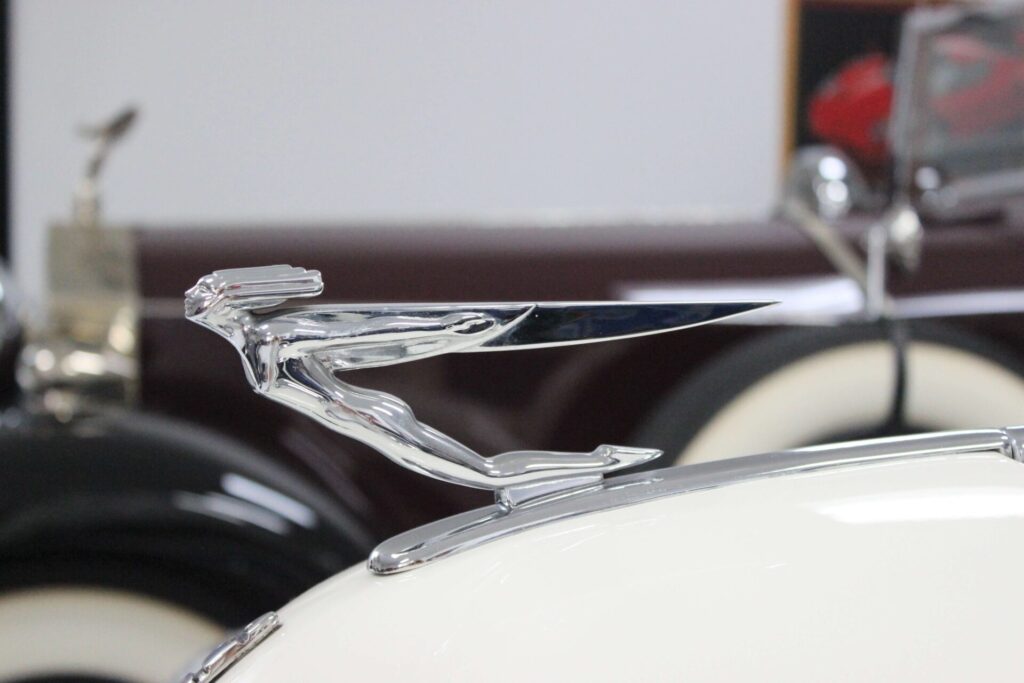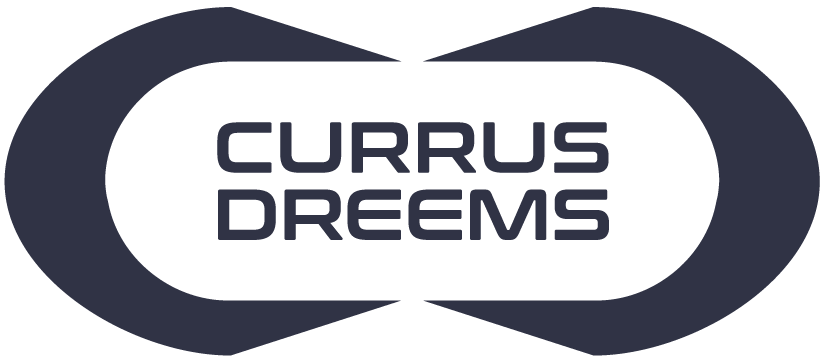The Automotive Dream “One man and his dream had not simply left the world with an engine and four wheels; Henry Ford and his Model T had influenced people's everyday lives - where they lived, how they spent their leisure time, even how they viewed themselves.” - Gary...
Hood Ornaments

Mascot on a MG car at the 2023 Pebble Beach Concours d'Élégance
Recent posts
Lagonda 16/80 Special Six 1933
English Touring The car we present to you this week is the Lagonda 16/80 Special Six in the Demers Car Collection. Lagonda was a luxury British car brand that Aston Martin eventually absorbed. Through its association with Aston Martin, it is sometimes hard to remember...
An Introduction to Lagonda
Before Aston Martin “The history of Lagonda cars is synonymous with sophistication, opulence, and groundbreaking performance” - An article for Discovery UK Today, we may recognize the name Lagonda from its association with Aston Martin. Before these two brands...
Cadillac Model A 1903
The Standard of the World “No other American car on the market in the first decade of the century was constructed to higher standards than Cadillac.” - Stephen W. Sears in The Automobile in America Some of you may know that Cadillac has long had the slogan “Standard...
A Short History
“They are a nostalgic reminder of a yesteryear with fewer rules and a greater flair for the dramatic, when the delight of automotive design was fixed firmly in the details.” – Shari Gab in Inside Hook
Have you ever looked at a classic car and become fascinated with its hood ornament? I have a few favorites in the Demers Car Collection. A personal favorite is the little cat on the moon of the Moon car, but I also have great respect and admiration for the glass sculptures made by René Lalique that adorn a few of the French cars in the Demers Car Collection. Did you ever ask yourself why these intriguing sculptures were there in the first place? Or why cars don’t really have them anymore? Keep reading to find out about the origin and evolution of hood ornaments.

How Did the Tradition Start?
“Hood ornaments predate cars themselves.” – A Look at the Evolution of Hood Ornaments for Students in Auto Body Schools in The Automotive Training Centres
Humans have always had the tendency to use mascots to adorn the front of their vehicles. It is said that Egyptian pharaoh King Tutankhamun had a mascot of a gold-crested falcon mounted at the head of his chariot. Famously, figureheads have also been used on ships for millennia. For car owners, hood ornaments were a way to personalize their automobile. It is believed that the first record of a decorative figure seen on an automobile is a bronze statue of St-Christopher (patron of travelers) mounted on the dash of an 1896 Daimler. In the case of hood ornaments though, their origin comes from a more practical use.

The Origin
They evolved from the placement of early temperature gauges and radiator caps. The location of MotoMeters, thermometers mounted on the radiator cap to monitor the temperature of the engine coolant, attracted the eye to the front of the car. Human creativity did the rest. Popular from 1905 to 1930, the Boyce MotoMeter Company first held the patent for these motometers. Manufacturers could order them customized and soon motormeters became distinctive to a car brand. Individuals and private companies could also order personalized motometers from the Boyce MotoMeter Company. With personalization came the addition of mascots to the motometers. Other mascot manufacturers also found ways of attaching temperature gauges to their mascot. Hence, a lucrative industry flourished. You could buy hood ornaments directly from car manufacturers, from aftermarket sellers like the Boyce Company and many others. You could also get them directly from artists, artisans and jewelry makers.

What automakers called “car mascots” were meant to be appealing car accessories, ways in which you could customize your car, show individuality and even status. Eventually, car makers brought the thermometer inside the passenger compartment and onto the dashboard, and radiator plugs disappeared inside the hood. The tradition to ornate the hood of a car, however, remained for a time. As the thermometer and radiator plug disappeared, the hood ornament stayed.

The Best Years
“Designers commonly used themes of women or goddesses, mythological men, and creatures; swift, graceful, or powerful animals and abstract streamlined shapes like rockets.” – Evolution of American Car Mascots and Hood Ornaments in the Auburn-Cord-Duesenberg Automobile Museum
In terms of fashions, early mascots from the 1910s and 1920s were realistic depictions of humans or animals. Don’t miss next week’s article to see a detailed mascot of a workman holding a steering wheel on an anvil on a car from the Demers Car Collection. Although a mascot could depict anything, the most popular ones showed human or animal figures. But as the years went by and as the Art Deco movement took over the car world, hood ornaments became a more stylized interpretation of their subject.

The decades that spanned the 1920s to the 1950s were the glory days of hood ornaments. They became an important part of a car’s design. Manufacturers developed them as their own signature. But individuals could also purchase a particular one themselves. For example, French sculptor René Lalique made a collection of 29 glass hood ornaments that wealthy buyers could attach to their cars. The adoption of a glass sculpture as a figurehead was an extreme show of opulence. You could even choose a base that would illuminate the glass figurine while you were driving. They were highly delicate, breakable and quite expensive. To put them at the front of your car would be quite brazen.
On the other side of the spectrum, cheap chrome-lacquered figurines could be bought from a variety of wholesalers and popular cars like Chevrolets and Plymouths also had their distinctive figureheads. Cheap aftermarket adornments could be purchased for as little as thirty-five cents.

The Decline
“It wasn’t until the late ‘70s that a slew of safety regulations robbed mascots of their metaphorical and physical sharpness.” – Shari Gab in Inside Hook
Eventually, car design became more streamlined and having a figure sticking out of the front of the car wasn’t “in” anymore. As a general rule, hood ornaments were gradually more and more abstract and toned down. Eventually, car makers made ornamental chrome-plated strips, basically extensions of the trim, almost flat with the hood and called them hood ornaments before they disappeared completely. This streamlining happened as fuel efficiency and aerodynamism became important.
Another concern that influenced the fall of the hood ornament was the increase of safety concerns. In the late 1960s and beginning of the 1970s, safety regulations became more and more strict. There was a growing worry that mascots were a threat to pedestrians in the case of a collision. Looking at the long and pointy beak of the Duesenberg “Duesenbird” you can imagine how that could be fatal.
A final concern that might explain the almost total disappearance of the hood ornament was theft. Mascots on luxury cars became important targets in the late 1980s. The fact that they remain important collectible items did nothing to relieve them from the danger of theft.

Adaption
Different brands dealt with these concerns differently. For example, Jaguar’s famous “Leaper” was relegated to become a two dimensional badge on the back of the car. As we’ve discussed it in the article about the Jaguar XJS, Jaguar executives were highly concerned with safety regulations. Where the “Leaper” used to be, Jaguar used a flat emblem showing the roaring head of a jaguar called the “Growler” for a while. No more chances of being impaled!
Other brands like Mercedes, Rolls-Royce and Bentley held on to the tradition. Instead of removing their hood ornaments, they adapted them to be safer. The Rolls-Royce “Spirit of Ecstacy” retracts when it senses a pressure of more than 20 pounds while some Mercedes encircled “Three-Pointed Stars” are designed on a spring-loaded ball joint that can withhold some flexion and that breaks off easily on impact.

What Now?
Today, hood ornaments, like many other automobilia, are highly collectible. They are even more dashing when set on the hood of a well-restored or well-preserved car. Like fabulous classic cars, these miniature sculptures are true pieces of art all on their own. Don’t miss next week’s blog, where we will discuss the 1910 Darracq in the Demers Car Collection and its elaborate mascot.




